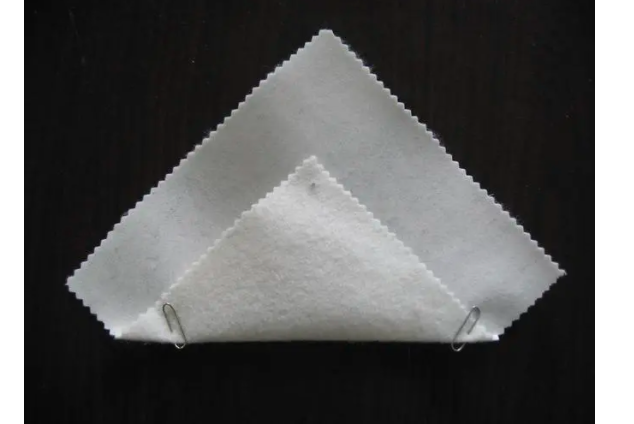- Understanding the Role of Geomembrane Liners in Waste Management
- Innovations in Geomembrane Liners for Water Management
- Geomembrane Liners: A Comprehensive Guide
- The Future of Geomembrane Liners in Civil Engineering
- Geomembrane Liners: Enhancing Landfill Stability
Manager:
WhatsApp:+86 177 0135 2670
Tel:+86 177 0135 2670
Email:marketing@okorder.com
Address:3rd Floor, No.2 Building, No.1 Sanlihe Road
The Silent Symphony of Geotextiles and Geomembranes in Modern Engineering
In the grand orchestra of contemporary engineering, the duet of Geotextiles and geomembranes is as vital as it is underplayed. These are hidden materials that are usually hidden in our infrastructure but provide it with rhythmic pattern and harmony necessary for strength and durability. This paper will delve into geotextiles and geomembranes revealing their roles, applications, and quiet vigour they bring to our built environment.
Introduction: The Unheard Sounds Of Geotextiles And Geomembranes
Geotextiles and geomembranes are among the unsung heroes in civil engineering profession since they perform multiple functions for various applications. When used with soil, geotextiles may be used for separation, filtration, reinforcement, protection or drainage purposes (Koerner 2012). They can be made into woven or non-woven polypropylene or polyester depending on their use. Cut-offs and liners are examples of some impermeable membranes known as geomembranes that find wide application especially in containment of hazardous or municipal wastes owing to their characteristics.

Civil Engineering Applications: Acting As Shields
Applications of geotextiles and geomembranes range from one extreme to another just like their areas of coverage vary significantly across different landscapes. In road construction they reinforce the surface giving it a strong foundation against traffic movements. Similarly, embankments, slopes, walls and foundations benefit from these materials which have high resistance against deformation.
Geomembranes are widely used as canal or pond liners due to their impermeability. The current largest application involves containment of hazardous waste together with leachate with most such linings incorporating geotextile underliners to strengthen the geomembrane itself besides providing gas venting systems as well as pathways for generated leachates.
Role Of Geotextile Composites In Improving Performance
The use of geotextile fabrics has expanded and the introduction of geotextile composites, which combine the advantages of geotextiles with other materials to create a more versatile and effective product. These composites have better performance in specific applications like those used in building reservoirs, canals, dams, coastal engineering projects.
Industry Innovations And Their Growth
Technological progress has been extremely fast in the industry for geomembranes and geotextiles over the last decade. Consequently, there is also increasing use of these products in various civil engineering works worldwide. Consequently, they felt need for a platform that could be used to disseminate information and discuss the growing body of technology on this subject among others such as “Geotextiles and Geomembranes” journal where research workers, designers, users, manufacturers etc can share and exchange knowledge.
Prospects And Challenges
As we look into future prospects of geotextiles and geomembranes, it becomes apparent that there are ongoing attempts aimed at improving their functionality, environmental sustainability as well as cost efficiency through research and development programs (Giroud 2012). Geo-textile long term durability can be very challenging while managing impact on environment by geo-membrane will focus on this area.
The Process of Installing: Fabric Placement
The installation process of geotextiles and geomembranes is a meticulous affair that requires careful planning and execution. For geotextiles, the site needs to be prepared by clearing the area of any debris and ensuring the ground is level and compact. The fabric is then unrolled, covering the desired area, and secured with landscape staples, ensuring at least a 3-inch overlap for wide areas. For geomembranes, the installation involves laying the membrane on a prepared subgrade, trimming it to fit, and securing it with stakes or adhesive.
The Environmental Impact: A Growing Concern
Despite numerous benefits from using geotextiles and geomembranes in many applications these materials have caused environmental concerns over their use. Most geotextiles consist of non-degradable polymers which can result in soil pollution as well as accumulation of microplastics into environment. Therefore interest has grown into developing green geotextiles, intelligent geotextiles as well as high-performance geotextiles that are both eco-friendly and effective in their applications.
In Conclusion: A Duet between Geotextiles and Geomembranes
This collaboration between these two entities emphasizes how powerful innovative ideas can be in civil engineering. Their indispensable role cannot be underestimated when we stretch our understanding to see new applications and push out boundaries with them notwithstanding that there will be limits beyond which they cannot go. Ingenuity about mankind’s ingenuity concerning its management of natural resources by overcoming engineering challenges remains evident through this journey.
Geotextiles and geomembranes comprise threads that run deep within the grand tapestry of our world; they connect us to both earth itself along with structures built on it. We should remember just how important these materials are for our works while weaving tomorrow because they are not just foundations but also fibers constituting infrastructure resiliently accompanying us throughout life’s journey.
- Previous:The Guardian of the Landscape: DuraWeb Geotextile Fabric’s Superiority in Landscaping
- Next:Mirafi 500X Geotextile Fabric: A Game Changer in Construction






